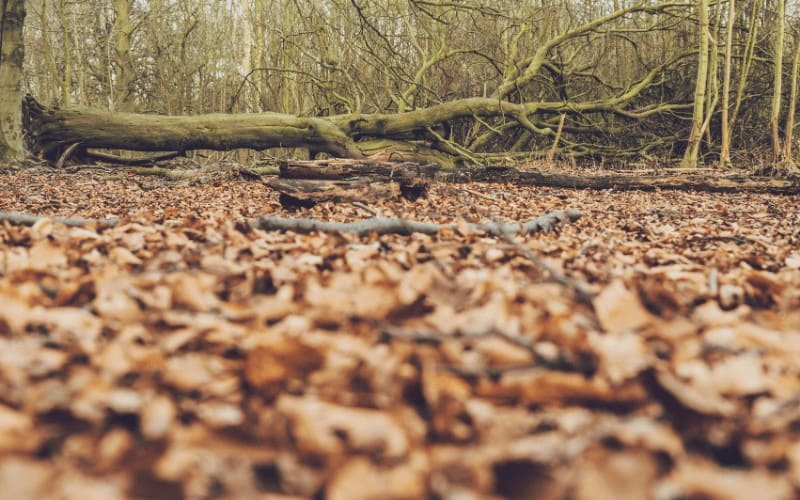How long can a dead tree remain standing? This is a question we often get asked, and we're going to answer here.
Trees are a fantastic addition to your outdoor landscape look. They are beautiful scenery that provides serenity, privacy, and shade. It could be heartbreaking to know your tree is dying because of the many benefits it offers.
However, a dead tree in your yard could cost you a lot of problems and money, which is why you may wish to know how long a dead tree can stand before falling down.
Table of Contents
How Long Can a Dead Tree Remain Standing?
It is indeed heartbreaking to see your precious tree degenerate over time and eventually die. However, no prediction would tell you exactly how long a dead tree can remain to stand, and it could be days, 1–2 years, or more.
A dead tree could even stand for decades-long, still offering some shade, shelter, and adding value to the ecological food by feeding wildlife or myriad species such as woodpeckers. But eventually, they will rot at the base and can fall and cause a series of problems.
In forest environmental science, the name snag for dead or fallen tree often refers to a standing, dead or dying tree, of which smaller or larger branches are absent. It is also known as coarse woody debris.
A Standing dead tree is a hardwood that has been destroyed by a naturally occurring event in the ecosystem and how long such a dying tree stands is solely dependent on natural factors, such as the soil, the type, amount of moisture content, and hardiness.
The state of the tree before death, cause of death, length of dyeing days, as well as the class the tree belongs (some are longer lasting/slower rotting than others)
The dying process is usually similar in all types of trees. The dead tree will begin to disintegrate part by part, little at a time, starting with the smaller limbs falling off first.
Branches start to fall, and then the bar log stands until it falls, which is usually measured according to the tree type. In oak trees, this could take decades.
Most dead trees will remain to stand unless there is a lot of disturbance, root rot, or insect damage as a result of being an attractive habitat that grabs the attention of bird activities, wildlife community, or ecosystem, this could quickly fall the dead tree down.
So, because every tree is different, there is no telling how long a dead tree can stand before it falls. Some trees appear deceitfully healthy, till a strong wind blows and knocks them off.
The good news is, although you cannot predict how long a dead tree can remain standing. However, you can tell the signs of a dying tree with these simple features.
So, how can you tell if a tree is dying in your yard?
Read Also: How to Save a Cherry Tree From Death
Symptoms of a Dying Tree
If you have a dead tree in your yard, powerful winds from a hurricane, heavy downpour, thunderstorm, or tornado could break off a limb or even pull out the entire tree, knocking it over your roof.
The cost to fix such hazards or damages could be more than you bargained as it could cost you a lot of money, mostly if your home insurance does not cover tree damage.
Fortunately, there are warning signs that serve as key indicators that something is wrong with your tree so you can take action to either revive or fell it.
Put together is a list of symptoms to look out as the indicators of a dying tree.
Trunk Damage
Inspect the suspected tree for vertical breaks. Extreme harm to your tree's trunk can significantly affect its endurance level and chances of survival.
Notwithstanding, if there are any visible breaks or creases on the trunk, investigate the bark on the tree — or deficiency in that area.
At the point when a tree ages, old trunk coverings will begin to fall on their own, and in healthy trees, new layers of bark will assume form if the tree is sound.
If fresh bark doesn't return and the smooth areas of woods remain, this can be a pointer your tree's wellbeing is on the decay.
Harmed Roots
Since roots are an underground system and they, run very deep below the actual tree surface, deciding whether your tree's roots are harmed isn't, in every case, noticeable or straightforward.
Recent uncovering activities, new development, a shallow root framework, bearing to extraordinary components, and helpless soil compaction are everything that can influence the health of a tree's root system.
One genuine indication of root harm is an unexpected and noticeable decline in the look of the tree. Another is if you start to see little branches growing from the core at the lower part of the tree.
These kinds of sprouts are called epicormic shoots, and they are indicators that the tree is under extreme stress.
Area
Has your property taken on some new development that involves construction? Were a few yet not the entirety of the trees in or around the development region removed?
Those trees saved might be encountering an increased exposure to sun and wind, which can be inconvenient to their wellbeing and growth.
Even close by construction, not necessarily on your property, can likewise harm roots, soil compaction, and changes in the soil extraction.
Conclusion
This article is a complete answer to one of the most asked questions from gardeners. How long can a dead tree remain standing is dependent on the factors listed above.
Also, make use of our key indicators to identify symptoms of a dying tree; before you decide to save a dying tree, know first if it is dying or already dead. Supplying nutrients to bring a dead tree back to life would be time-consuming and ridiculous.
Study the anatomy of your tree, so you know what factors affect their life-span.





